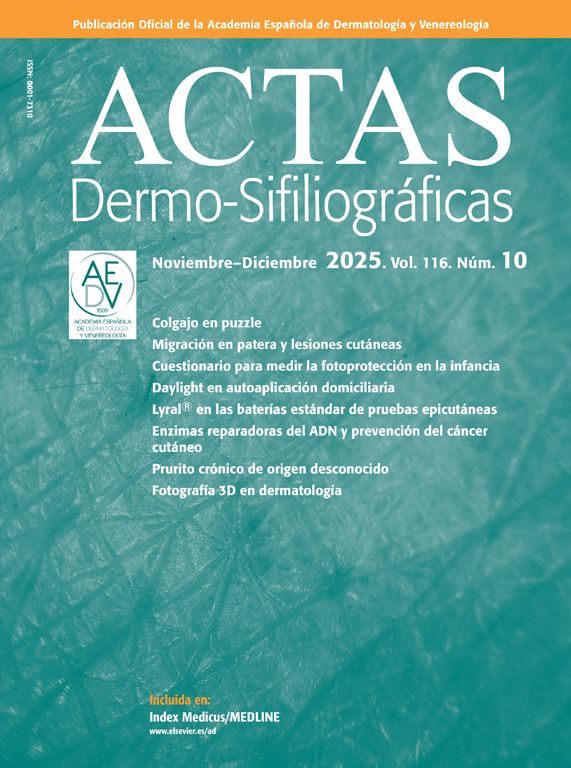A newborn baby girl, from a monochorionic diamniotic twin pregnancy where the other fetus died at 11 weeks, was evaluated for scar-like lesions symmetrically distributed on both sides of her chest (Fig. 1A). The baby girl was followed in the dermatology department for 10 years, with the evolution of the lesions shown in Fig. 1B.
Congenital aplasia cutis (CAC) refers to a heterogeneous group of disorders characterized by the absence of normal skin or presence of a scar at birth. Although, generally, these lesions are single and tend to be located on the scalp, they can also be multiple and found in other areas. CAC type V, according to Frieden's classification, tends to be located on the trunk or extremities, usually being larger, irregularly shaped, and symmetrically distributed. CAC type V can be an indication of a fetus papyraceus in a twin pregnancy, and it has also been described in some severe cases of epidermolysis bullosa. Although the etiology of this type of CAC is unknown, it is proposed that it may be due to hypotension or thrombotic phenomena. Other congenital abnormalities, such as digestive malformations, biliary atresia, intestinal necrosis, and renal necrosis, among others, should be ruled out. Treatment is usually conservative.





